iGlass
Archive for
Introducing the Durham team
Over the coming weeks we will introduce members of each team working on the iGlass consortium project. Today we will introduce the Durham University team.
Professor Antony Long
Antony holds a Chair in 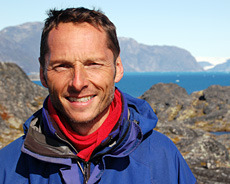 Physical Geography at Durham University. His research interests are Quaternary environmental change, especially past and future sea-level change and coastal evolution around Greenland and the North Atlantic. He is particularly experienced in the use of isolation basins, estuarine and salt marsh sediments to reconstruct past sea level, and has, most notably, produced key relative sea-level datasets for Greenland, along with reconstructions of the former position of the ice sheet since deglaciation, constraining the ice load over a range of timescales. Alongside this he has worked around the wider North Atlantic using salt marsh sediments to reconstruct sea level over decadal to millennial timescales; on buried estuarine sediments in the Irish Sea that record late glacial sea-level changes; and Holocene sea level and coastal evolution in England and north west Scotland. Antony is Head of the Department of Geography at Durham University. He is currently a co-leader of PALSEA2, Editor in Chief of Journal of Quaternary Science, and sits on the Executive Committee of the Quaternary Research Association.
Physical Geography at Durham University. His research interests are Quaternary environmental change, especially past and future sea-level change and coastal evolution around Greenland and the North Atlantic. He is particularly experienced in the use of isolation basins, estuarine and salt marsh sediments to reconstruct past sea level, and has, most notably, produced key relative sea-level datasets for Greenland, along with reconstructions of the former position of the ice sheet since deglaciation, constraining the ice load over a range of timescales. Alongside this he has worked around the wider North Atlantic using salt marsh sediments to reconstruct sea level over decadal to millennial timescales; on buried estuarine sediments in the Irish Sea that record late glacial sea-level changes; and Holocene sea level and coastal evolution in England and north west Scotland. Antony is Head of the Department of Geography at Durham University. He is currently a co-leader of PALSEA2, Editor in Chief of Journal of Quaternary Science, and sits on the Executive Committee of the Quaternary Research Association.
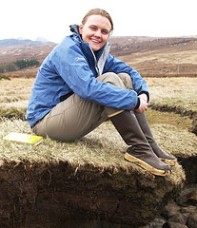
Dr Natasha Barlow
Natasha is a postdoctoral researcher on the iGlass project, having done her PhD at Durham. Her interest is reconstructing Quaternary environments, and in particular relative sea-level change on both active and passive coasts. Natasha is particularly experienced in the use of diatoms to quantitatively reconstruct relative sea-level change from coastal sediments, along with developing chronological frameworks. This has led her to apply these techniques to salt marsh sediments from around the North Atlantic that act as ‘geological tide gauges’ for the last 2000 years (her previous postdoc) and reconstructions of land-level changes associated with great earthquakes in Alaska. She also has some experience in glacial isostatic adjustment modeling and continues to work on questions regarding the impact of mass balance changes on sea level in Alaska, Iceland and South Georgia.
IPCC 5th Assessment WG1 summary
A summary for policy makers was released today. It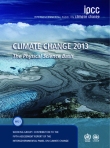 includes is a clear statement that humans have influenced climate system.
includes is a clear statement that humans have influenced climate system.
“As the ocean warms, and glaciers and ice sheets reduce, global mean sea level will continue to rise, but at a faster rate than we have experienced over the past 40 years,” said Co-Chair Qin Dahe.
From the summary of thesea level chapter: “There is very high confidence that maximum global mean sea level during the last interglacial period 129,000 to 116,000 years ago) was, for several thousand years, at least 5 m higher than present and high confidence that it did not exceed 10 m above present. During the last interglacial period, the Greenland ice sheet very likely contributed between 1.4 and 4.3 m to the higher global mean sea level, implying with medium confidence an additional contribution from the Antarctic ice sheet. This change in sea level occurred in the context of different orbital forcing and with high-latitude surface temperature, averaged over several thousand years, at least 2°C warmer than present (high confidence).” (Approved summary for policy makers WGI AR5-SPM_Approved27Sep2013)
Further information: link to the IPCC
Lambeck lecture: Geological Society 25th Sept
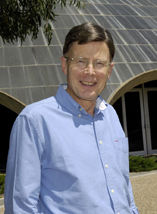 Last night a couple of iGlass members attended the Geological Society of London Special Lecture given by Prof. Kurt Lambeck. Prof. Lambeck was presented with the Society’s highest award, the Wollaston Medal and gave an overview of his research career that spans more than 50 years. We were treated to an overview of his work with a focus on: what we have learnt about past ice sheets from geophysical inversion models, the mantle’s response to loading on timescales of thousands of years and lessons from the past that may be relevent in understanding present (and future) sea level change.
Last night a couple of iGlass members attended the Geological Society of London Special Lecture given by Prof. Kurt Lambeck. Prof. Lambeck was presented with the Society’s highest award, the Wollaston Medal and gave an overview of his research career that spans more than 50 years. We were treated to an overview of his work with a focus on: what we have learnt about past ice sheets from geophysical inversion models, the mantle’s response to loading on timescales of thousands of years and lessons from the past that may be relevent in understanding present (and future) sea level change.
Introducing the York team
Over the coming weeks we will introduce members of each team working on the iGlass consortium project. Today we will introduce the members based at the University of York.
Prof. W. Roland Gehrels
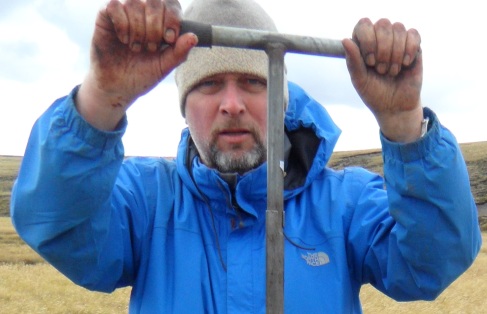 Roland Gehrels is a Quaternary geologist and a physical geographer who specialises in sea-level studies. He was appointed as a Chair in Physical Geography in York in June 2013. Prior to coming to York he was at Plymouth University for almost 18 years, starting as a lecturer and going through several promotions until he was awarded a Chair in 2007. At Plymouth he was a member of the Quaternary Environments Research Group and headed a small research cluster in sea-level studies. Before that, he worked as a postdoctoral researcher at the University of Durham with Ian Shennan. His PhD at the University of Maine (USA) investigated Holocene sea-level changes in the Gulf of Maine and was supervised by Dan Belknap and Joe Kelley. His first endeavours in sea-level studies were in collaboration with the late Orson van de Plassche at the Vrije Universiteit in Amsterdam where he completed an MSc in Applied Quaternary Geology.
Roland Gehrels is a Quaternary geologist and a physical geographer who specialises in sea-level studies. He was appointed as a Chair in Physical Geography in York in June 2013. Prior to coming to York he was at Plymouth University for almost 18 years, starting as a lecturer and going through several promotions until he was awarded a Chair in 2007. At Plymouth he was a member of the Quaternary Environments Research Group and headed a small research cluster in sea-level studies. Before that, he worked as a postdoctoral researcher at the University of Durham with Ian Shennan. His PhD at the University of Maine (USA) investigated Holocene sea-level changes in the Gulf of Maine and was supervised by Dan Belknap and Joe Kelley. His first endeavours in sea-level studies were in collaboration with the late Orson van de Plassche at the Vrije Universiteit in Amsterdam where he completed an MSc in Applied Quaternary Geology.
Dr. Margot H. Saher
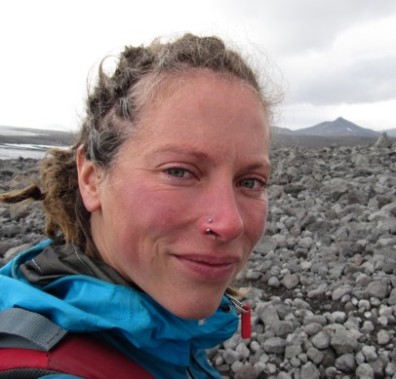 Margot Saher is a palaeoclimatologist specialized in foraminifera, who has been applying the study of these micro-organisms to sea-level research for the past four years. She has been working on the iGlass project since 2009; first at the University of Plymouth (which later renamed itself Plymouth University) and since June 2013 at the University of York. This was her second sea level related project; before iGlass she studied sea-level variability over the last 500 years in the North Atlantic. She has also studied benthic foraminifera ecology in the Barents Sea in relation to anthropogenic warming; this took place at the Norwegian Polar Institute in Tromsø. She received her education (MSc and PhD) at the Vrije Universiteit in Amsterdam, working with Dick Kroon and Simon Jung.
Margot Saher is a palaeoclimatologist specialized in foraminifera, who has been applying the study of these micro-organisms to sea-level research for the past four years. She has been working on the iGlass project since 2009; first at the University of Plymouth (which later renamed itself Plymouth University) and since June 2013 at the University of York. This was her second sea level related project; before iGlass she studied sea-level variability over the last 500 years in the North Atlantic. She has also studied benthic foraminifera ecology in the Barents Sea in relation to anthropogenic warming; this took place at the Norwegian Polar Institute in Tromsø. She received her education (MSc and PhD) at the Vrije Universiteit in Amsterdam, working with Dick Kroon and Simon Jung.
Introducing the Southampton team
Over the coming weeks we will introduce members of each team working on the iGlass consortium project. Today we will introduce the University of Southampton members, based at the National Oceanography Centre, Southampton.
Dr Ivan Haigh
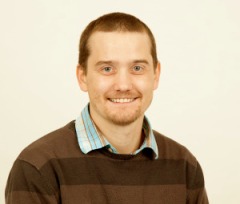 Ivan is the co-ordinator of the iGlass project. In the last 12 years he has worked on a wide range of projects in both industry and academia covering many different aspects of coastal oceanography, with a particular focus on sea-level rise and coastal flooding. Ivan’s main research interests are:
Ivan is the co-ordinator of the iGlass project. In the last 12 years he has worked on a wide range of projects in both industry and academia covering many different aspects of coastal oceanography, with a particular focus on sea-level rise and coastal flooding. Ivan’s main research interests are:
- assessing historic and determining future changes in mean and extreme sea levels at local, regional and global scales; and
- determining how to effectively translate global projections of absolute sea level rise down to regional and local scales in practical terms that will aid coastal managers and engineers inform flood and erosion risk-based management and for future planning.
In this regard, he is interested in all aspects of sea level variations from time scales of minutes (ocean surface waves), hours (seiches, tides), days (storm surges), through to longer term changes (seasonal, inter-annual and longer-term changes in mean sea levels, lunar tidal cycles). He has experience in assessing observational datasets (i.e. tide gauge records, wave buoy data) and tide/surge and wave numerical modelling for short (forecasting, navigation) and long (coupling with climate models to assess past/present and potential future changes in storm surges, extreme sea levels and coastal flooding) term applications.
Prof. Eelco Rohling
Eelco was instrument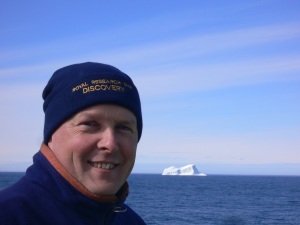 al in setting up the iGlass project and continues to be very involved despite moving to Australia (to take up the pretigious Australian Laureate Fellowship in Feb 2013). Eelco’s current research aims to understand climate and sea-level change on timescales relevant to longer-term planning, by characterising the relationship between past sea-level and ice-volume change and other key climate factors such as temperature and greenhouse gases, and by quantifying how rapidly sea level may adjust to climate change.
al in setting up the iGlass project and continues to be very involved despite moving to Australia (to take up the pretigious Australian Laureate Fellowship in Feb 2013). Eelco’s current research aims to understand climate and sea-level change on timescales relevant to longer-term planning, by characterising the relationship between past sea-level and ice-volume change and other key climate factors such as temperature and greenhouse gases, and by quantifying how rapidly sea level may adjust to climate change.
Eelco has received a prestigious UK Royal Society Wolfson Research Merit Award and been a visiting scientist to the Lamont Doherty Earth Observation in the United States, invited Professor at the Muséum national d’Histoire naturelle in Paris, the Vice President of Palaeoclimatology of the European Geoscience Union and a Corresponding Fellow at the Royal Netherlands Academy of Arts and Sciences. His most significant research contributions have focussed on the processes of past climate change on decadal to millennial time scales and the consequences of hydrological change on ocean circulation, marine ecosystems, and organic carbon sequestration or burial.
Dr Fiona Hibbert
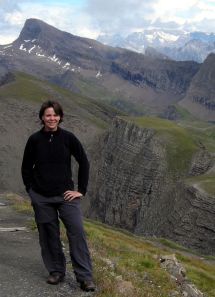
Fiona is a research fellow and project manager for the iGlass project. She is currently working on a global compilation of data on interglacial sea level changes (derived from corals, speleothems etc.) and information on the past extent and dynamics of ice sheets. Fiona is a palaeoceanographer with keen interest in past climates (especially ice-ocean-atmosphere interactions) and her main research interests are:
- Interglacial sea level
- Interglacial palaeoclimate
- Dynamics (and dating) of past ice sheets
Prior to joining iGlass, Fiona worked on (and continues to work on…)
- The paleoceanography of the North Atlantic
- The history of the former British-Irish Ice Sheet
- Ice-rafted debris and its provenance
- Tephra, marine radiocarbon and other methods of age control within marine sediments
Felicity Williams
Felicity is at the end of her second year as an iG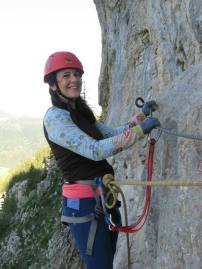 lass consortium PhD funded by NERC. Felicity’s project involves investigating the relationship between the Red Sea Relative Sea Level curve and global ice volume over the past 500,000 years. To do this she is developing models of global ice volume and combining Glacial Isostatic Adjustment modelling with sea level indicators such as coral data. Mark Tamisiea (Liverpool) and Eelco Rohling (Canberra, Australia), are her two iGlass supervisors. So far she has researched the geological development of the Red Sea, reviewed many, many papers on the collection and dating of coral data, and reviewed the issues associated with determining variations in global ice volume beyond the last glacial maximum. GIA modelling of the Hanish Sill, a critical location associated with the Red Sea Method for determining the Red Sea relative sea level curve, has started to deliver some very interesting results.
lass consortium PhD funded by NERC. Felicity’s project involves investigating the relationship between the Red Sea Relative Sea Level curve and global ice volume over the past 500,000 years. To do this she is developing models of global ice volume and combining Glacial Isostatic Adjustment modelling with sea level indicators such as coral data. Mark Tamisiea (Liverpool) and Eelco Rohling (Canberra, Australia), are her two iGlass supervisors. So far she has researched the geological development of the Red Sea, reviewed many, many papers on the collection and dating of coral data, and reviewed the issues associated with determining variations in global ice volume beyond the last glacial maximum. GIA modelling of the Hanish Sill, a critical location associated with the Red Sea Method for determining the Red Sea relative sea level curve, has started to deliver some very interesting results.
Felicity graduated with an MSci Physics from Imperial College in 2000, and spent several years working in the UK Civil Service before returning to academia via the MSc Oceanography at the National Oceanographic Centre, University of Southampton.
Dr. Cheng Zhao
Cheng is a pala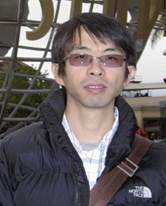 eoclimatologist and geochemist working on coral sea level index points. He has been working on the iGlass project since 2012. Prior to this Cheng worked extensively on lake records of Holocene climate (including Tibet and North America) and joined the Southampton team in May 2012 from the University of Hong Kong.
eoclimatologist and geochemist working on coral sea level index points. He has been working on the iGlass project since 2012. Prior to this Cheng worked extensively on lake records of Holocene climate (including Tibet and North America) and joined the Southampton team in May 2012 from the University of Hong Kong.
Future flood losses in the world’s largest coastal cities
Rising sea levels and subsidence due to ground water pumping, coupled with increasing populations and economic growth in coastal cities, is expected to lead to a greater proportion of people living in low lying regions which will result in higher annual losses from flooding. A Nature Climate Change article, published recently, has estimated the average annual losses from flooding in the world’s largest coastal cities. The analysis shows annual loses from flooding could rise from about $6 billion per year in 2005 to over $1 trillion per year by 2050. Sea level rise and subsidence alone will increase annual losses to around $63 billion by 2050, even if investments are made to maintain flood probabilities at current levels. You can read more about the work here: http://link.springer.com/article/10.1007/s11069-012-0234-1.
PSMSL 80th Anniversary Workshop
The Permanent Service for Mean Sea Level’s (PSMSL), an important facility responsible for the collection, publication, analysis and interpretation of sea level data from the global network of tide gauges, are holding a workshop on the 28th to 29th Oct 2013 to celebrate their 80th anniversary. Several members of the iGlass team will be attending and presenting at that workshop.
See the following link for details – http://www.psmsl.org/about_us/news/2013/workshop_2013/
iGlass new web-site
We are pleased to launch this new project web-site.
The iGlass consortium, funded by UK Natural Environment Research Council, aims to better understand the processes of ice-sheet and sea-level response to climatic forcing, using data from the recent geological past.


